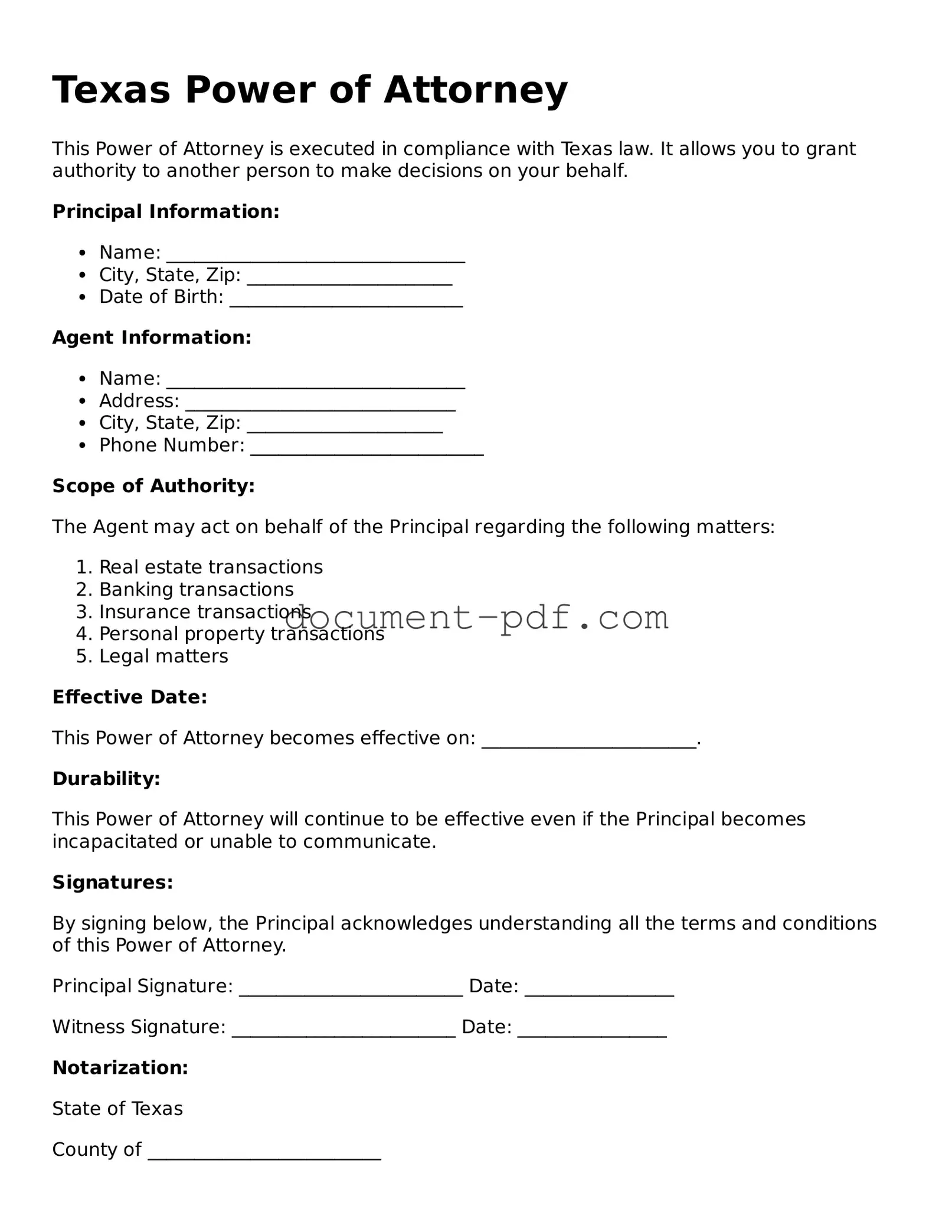The Texas Medical Power of Attorney is a document that allows an individual to designate someone to make healthcare decisions on their behalf if they become incapacitated. Similar to the general Power of Attorney, it grants authority to another person, but its focus is specifically on medical choices. This document ensures that your healthcare preferences are respected, even when you are unable to communicate them yourself.
The Durable Power of Attorney is another form that operates similarly to the Texas Power of Attorney. It remains effective even if the principal becomes incapacitated. This durability feature makes it a popular choice for individuals who want to ensure their financial and legal matters are managed seamlessly, regardless of their health status. Like the general Power of Attorney, it can cover a wide range of decisions, from managing bank accounts to handling real estate transactions.
A Living Will is closely related to the Texas Medical Power of Attorney. It outlines an individual’s wishes regarding medical treatment in situations where they cannot express their desires. While the Medical Power of Attorney appoints someone to make decisions, a Living Will specifies what types of treatment one does or does not want. Both documents work together to provide clarity and direction in medical situations.
The Financial Power of Attorney is another variant that specifically focuses on financial matters. This document allows a designated person to handle financial transactions, pay bills, and manage assets on behalf of the principal. Like the Texas Power of Attorney, it can be tailored to grant broad or limited powers, depending on the individual's needs and preferences.
The Guardianship documents are similar in that they involve appointing someone to make decisions for another person. However, guardianship is typically established through a court process and is often used for minors or adults who are unable to care for themselves. While both guardianship and Power of Attorney involve delegation of authority, guardianship is more formal and requires ongoing court oversight.
The Advance Directive combines elements of both the Living Will and the Medical Power of Attorney. It allows individuals to express their wishes regarding medical treatment and appoint someone to make decisions if they are unable to do so. This document ensures that both the individual’s preferences and the authority to act on those preferences are clearly defined, similar to how the Texas Power of Attorney functions for other areas of life.
The Revocation of Power of Attorney is a document that serves to cancel any previously granted Power of Attorney. While it may seem different, it is important to understand how it relates to the original document. If circumstances change or if the principal no longer trusts the appointed agent, this document allows them to revoke that authority, ensuring that their decisions are always in their control.
A Texas Quitclaim Deed is a legal document used to transfer ownership of real property without making any warranties about the title. This form allows a property owner to relinquish their rights to a property, giving them to another individual or entity. It is an important tool for simplifying property transfers, especially in situations like divorces or property settlements. For those looking to complete this process smoothly, resources like Texas PDF Templates can be invaluable.
The Trust Agreement is another legal document that shares similarities with the Power of Attorney. While a Power of Attorney grants authority to manage affairs on behalf of someone, a Trust Agreement creates a legal entity to hold and manage assets for the benefit of others. Both documents can be used for estate planning purposes, ensuring that an individual’s wishes are carried out, whether through direct management or through a trust structure.
